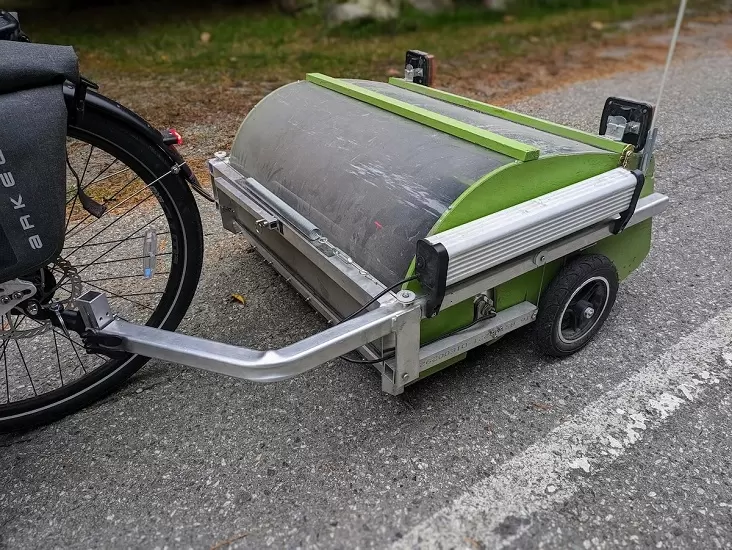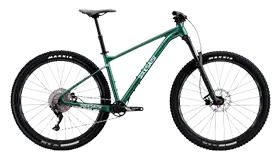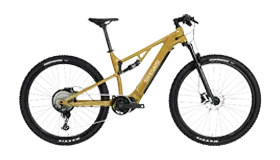Check This Out: A Motorized Bike Trailer That Cleans Bike Lanes
This innovative street sweeper uses an e-scooter motor to pick up debris.

Anyone who has ridden a few miles on an e-bike on public streets has almost certainly noticed that there is more debris—especially broken glass—at the side of the road than in the traffic lane. The way cars cause debris to be blown to the side of the road means that the tires most susceptible to flats—those on bikes and e-bikes—have to ride through most of the stuff that can cause flats.
One cyclist got the idea to create a street sweeper that he could pull along behind his bicycle. Pierre Lermant, a data science and mechanical engineer in Silicon Valley got tired of all the debris in his local bike lanes and decided to do something about it.
Lermant built a chain-driven prototype using 2x4s and an industrial sweeping brush. Word of Lermant’s invention got around and about 18 months after constructing his prototype, engineer Cedric Eveleigh got in touch.
Eveleigh is known for his Supre Drive drivetrain for mountain bikes. It uses a single pulley rear derailleur positioned between the cassette and the chainrings, rather than below the cassette. Eveleigh had moved to the Sunshine Coast of British Columbia and was part of a brigade of volunteers who would go out and manually sweep bike lanes. He and his friends did so as a way to draw attention to the fact that the local government didn’t sweep the lanes enough. Lermant’s idea struck him as a way to combine riding with sweeping.
Eveleigh ran across Lermant’s design in a Google search and got in touch with an offer to help with engineering and manufacturing. Their collaboration—partly online and partly in-person—has resulted in two market-ready designs.

One version of the Bike Lane Sweeper pushes dirt and debris to the side and is intended for use in rural areas where it can be swept off the road. Another version of the sweeper collects what is swept into a bin that can be removed and emptied.
Both designs use an aluminum frame with sides made from either ABS or plywood and then an e-bike battery powers a scooter motor that spins the brush. A wireless switch mounted on the bar allows the rider to turn the sweeper on and off.
The sweepers use a Burley trailer hitch that is compatible with most rear dropout designs.
In addition to the prototype that Cedric’s group (Transportation Choices Sunshine Coast, or TraC), several other advocacy groups are testing them in Portland, Oregon; Charlotte, North Carolina; and Sonoma County, California
By the time you’ve ridden a few thousand miles, you’ve had a flat tire (or maybe ten). Often, those flats are caused by things that a properly swept street would have removed. Glass, nails, staples, rocks and more could be removed from busy bike lanes and bike paths. This is a terrific idea and design and we hope it takes off.
This article and pictures are from reprint.










